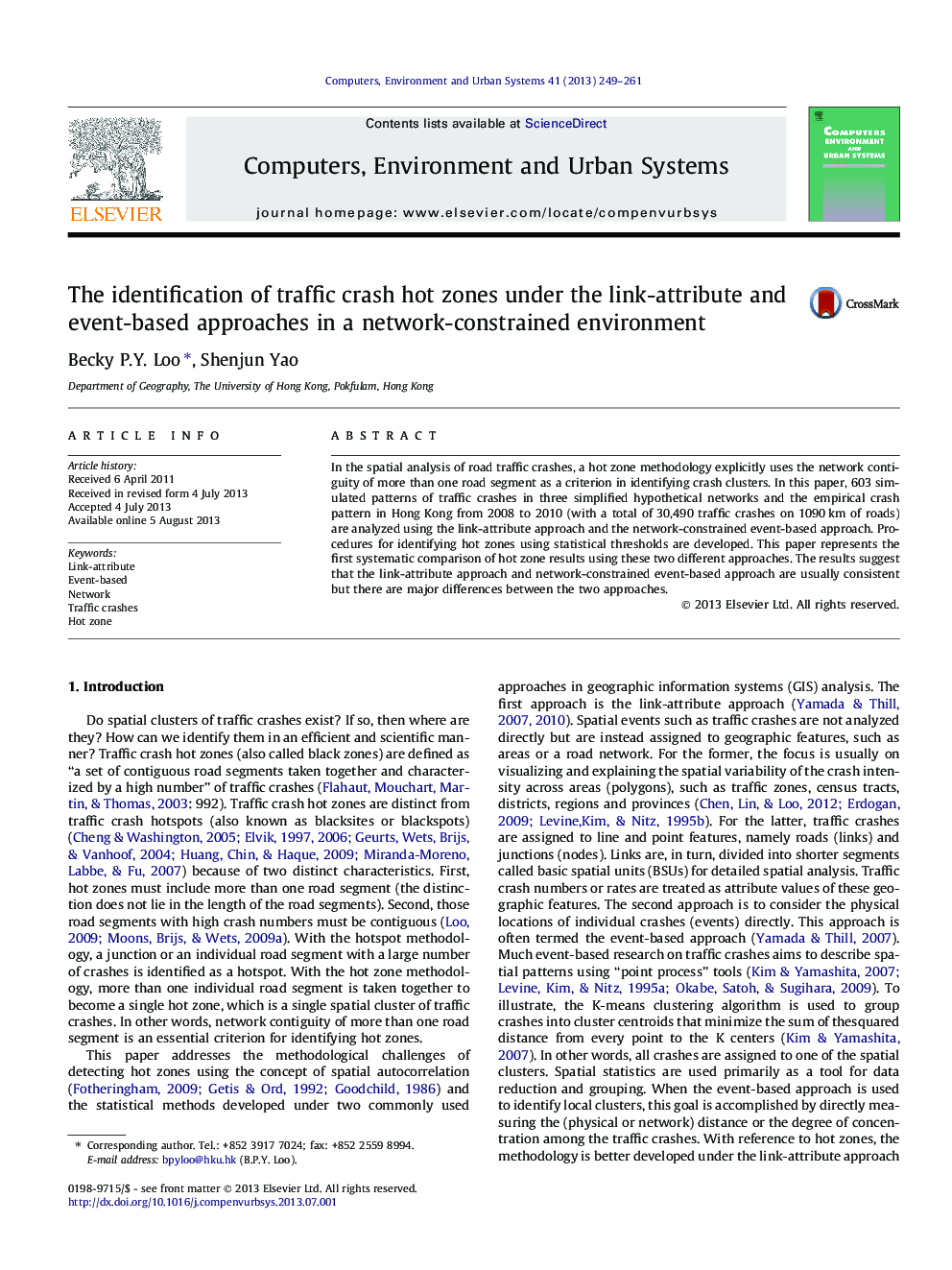| Article ID | Journal | Published Year | Pages | File Type |
|---|---|---|---|---|
| 6922013 | Computers, Environment and Urban Systems | 2013 | 13 Pages |
Abstract
In the spatial analysis of road traffic crashes, a hot zone methodology explicitly uses the network contiguity of more than one road segment as a criterion in identifying crash clusters. In this paper, 603 simulated patterns of traffic crashes in three simplified hypothetical networks and the empirical crash pattern in Hong Kong from 2008 to 2010 (with a total of 30,490 traffic crashes on 1090Â km of roads) are analyzed using the link-attribute approach and the network-constrained event-based approach. Procedures for identifying hot zones using statistical thresholds are developed. This paper represents the first systematic comparison of hot zone results using these two different approaches. The results suggest that the link-attribute approach and network-constrained event-based approach are usually consistent but there are major differences between the two approaches.
Related Topics
Physical Sciences and Engineering
Computer Science
Computer Science Applications
Authors
Becky P.Y. Loo, Shenjun Yao,
